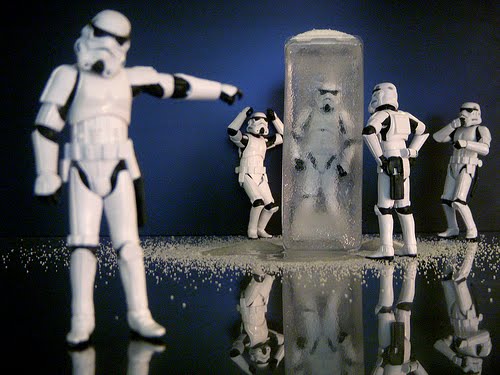Think of what a story would be without structure. Many of us don't have to imagine it, we have those stories buried under our beds!
Structure helps move a story along, it lends novels that most mysterious of things: narrative drive. The I-can't-put-it-down quality that keeps sane people up way past their bedtime.
Structure also helps writers when we have that feeling: Gee, shouldn't something be happening about now? But what? Following a structure, or even reading about it, can generate ideas.
The Purpose Of Writing/Storytelling
Screenwriters talk about structure more than novel writers, so I've been studying screenwriting. Not with the intention to write a script--novels are challenging enough!--but to learn about different story structures.
Whether we're talking about writing a novel, short story or a screenplay, it's the same basic idea: We're telling a story to an audience. We are entertainers seeking to wow the crowd.
One concept I discovered recently, that of the Pinch or Pinch Point, is another tool a writer can stow away in her toolbox just in case she needs it. And, during NaNoWriMo, who knows what will come in handy before the month is through.
Pinch Points
A pinch point is a reminder. It's a reminder of who the antagonist is and what is at stake. Further, this reminder isn't filtered by the hero's experience. In other words, it's not just how the hero sees the antagonist, or antagonistic force, this is how they are. Here we see their true nature. (Story Structure Series: #9 – Pinch Points, Larry Brooks)
The Structure Of Your Story: How To Use Pinch Points
There are two pinch points--sometimes just called "pinches"--in a novel or screenplay. Assuming a three act structure, the first pinch comes halfway through the first part of the 2nd act (3/8 mark) and the second pinch comes halfway through the second part of the 2nd act (5/8 mark).
Clear as mud? Here's a drawing:
First Pinch Point:
The first pinch point reminds us of the central conflict of the story.
Second Pinch Point:
The second pinch point, like the first, reminds the audience of the central conflict of the story, but it also is linked to the first (Wikipedia, Screenwriting). It shows the audience the threat (whatever it is that still stands in the way of the hero achieving his goal). The pinch point scene lays out what the hero has yet to conquer/overcome/accomplish. (“The Help” – Isolating and Understanding the First “Pinch Point”, Larry Brooks)
My background isn't in screenwriting but, to me, pinch points seem a lot like sequels. Not exactly like a sequel, though, because sequels come after the scene, after the action. Perhaps a pinch is like a scene+sequel. You show your audience the antagonist in all their unadulterated glory (or horribleness) and then you see the aftermath, the personal consequences for the hero, the goals he has still accomplish and why he must accomplish them.
Examples of Pinch Points
First Pinch Point
[I]n Star Wars, Pinch 1 is the Stormtroopers attacking the Millennium Falcon in Mos Eisley, reminding us the Empire is after the stolen plans to the Death Star R2-D2 is carrying and Luke and Ben Kenobi are trying to get to the Rebel Alliance (the main conflict). (Screenwriting, Wikipedia)
Second Pinch Point
In Star Wars, Pinch 2 is the Stormtroopers attacking them as they rescue the Princess in the Death Star. Both scenes remind us of the Empire's opposition, and using the Stormtrooper attack motif unifies both Pinches. (Screenwriting, Wikipedia)So, in Star Wars, the pinch points remind us that the Big Bad is the Emperor. Further, the pinch points are related--the second one calls back to the first--through the use of Stormtroopers.
Even if we end up not using them, the concept of pinch points can help remind us that we shouldn't lose sight of the antagonist in the story. Sometimes this is a danger when the antagonist works behind the scenes, through his or her minions, and receives little "on stage" time.
# # #
Go NaNo-ers! :-)
Other articles you might like:
- More Writing Advice From Jim Butcher- How To Get Your Readers To Identify With Your Main Character
- Chuck Wendig And The Battle Song Of The Storyteller
Resources:
- Syd Field's Podcasts (Syd Field was the first person to publish a book on modern screenwriting)
- StoryFix (Run by Larry Brooks)
Photo credit: "Ice Storm" by JD Hancock under Creative Commons 2.0.


